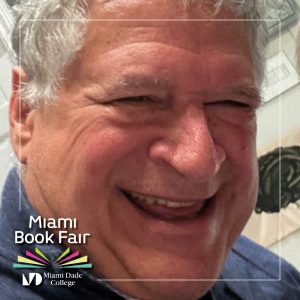
Conrad Gleber and his late wife, Gail Rubin, built a successful niche book publishing business in New York City and raised three children. The couple relocated to Tallahassee in the nineties; he now divides his time between Miami, where his daughter, Katrina, lives, and New York, which is home to his two sons, John and Conrad.
Tell me about the publishing house you started.
I went to the Art Institute of Chicago and studied in Europe, in Florence. Gail was a RISD grad. When we moved to New York we started Chicago Books, where we did a lot of artists’ book publishing. We had our own presses and manipulated the printing process to create very original published works.
So your presses were actually in Manhattan?
Yeah, on Franklin Street, in the neighborhood that became Tribeca. We had a 6,000-square-foot, mezzanine-style loft – we lived there and had the business there. One of the windows was used for an art installation piece. That got written up in the Times and then we invited other artists to install their work.
What kind of books were you publishing?
They were by various artists. We sent them out as part of a subscription; for $50 you’d get six books but you didn’t know when you were going to get them or who was going to do them. [laughs] That was around ’79, ’80. By that time we knew a lot of people and the downtown arts scene was … it was very different then. No cell phones, no networking – it was real time, real people. I did a lot of things for the Metropolitan, for the Modern. I was considered a fine print publisher.
That sounds amazing – and I’m wondering how you ended up in Florida when you were so rooted in New York.
Tribeca kind of went over to the Lower East Side – by that time it was the ’90s – and then Gail was offered the chair of the art department at Florida State. We moved to Tallahassee and I eventually sold the business to our employees. Then I went back to school for my doctorate in educational research, at FSU. Digital was coming on, websites were beginning to form, and you knew things were going to change real quick.
When did you come down to Miami?
We were thinking about retirement and bought a condo on Brickell Bay Drive in ’09. And Patrick, one of my brothers, is here. He owned Tobacco Road for years.
How did you first learn about Miami Book Fair?
My daughter turned me on to it. Every time I’d come to visit she’d say, “You know, this is so about you – you’d love it.” So finally I bit and I went, and I was just overwhelmed by how good it was. [laughs] You feel like you can talk to anybody that you run into, you sit down and have a snack in the Friends lounge and you’re still talking away with people, or you all go to a session with a great author who just flew into town. It’s like you had a conversation before you met them, and you’re just continuing it.
I know! It’s one of the best things about being a Friend.
It’s familiarity without the work. [laughs] And I’m a great proselytizer now for the Fair and the Friends. I have a friend in New Orleans, Bob, who I introduced to the Fair – he loved it and immediately became a Friend. Another friend of mine in New York, Vicki, I brought her and she became a Friend, too. And there are others. I’m like the Pied Piper of Miami Book Fair! [both laugh]
I love that.
It’s so hard to find stuff of this caliber and quality that also engages and includes you. It’s one thing to be engaged, but to feel like you found your fit? It’s really good; it’s an extraordinary and compelling bit of time to spend.
Which of last year’s sessions stand out for you most?
Walter Mosley. I’m heavy on the nonfiction; he got me into some fiction. Henry Winkler was amazing. David Brooks, too. And Roz Chast. I did a printed piece for her in the ’80s, in the early part of her career, so when I saw that she was going to be at Book Fair I had to see her. It was fun catching up.
You never quite know what’s going to happen at the Fair, but you know whatever it is, it’s going to be good.
There are always things to discover. I don’t know what they’re going to be but I know they’re going to be there. To me, that’s the reason why the Fair is so important.
Interview by Elisa Chemayne Agostinho; responses have been edited for space and clarity.